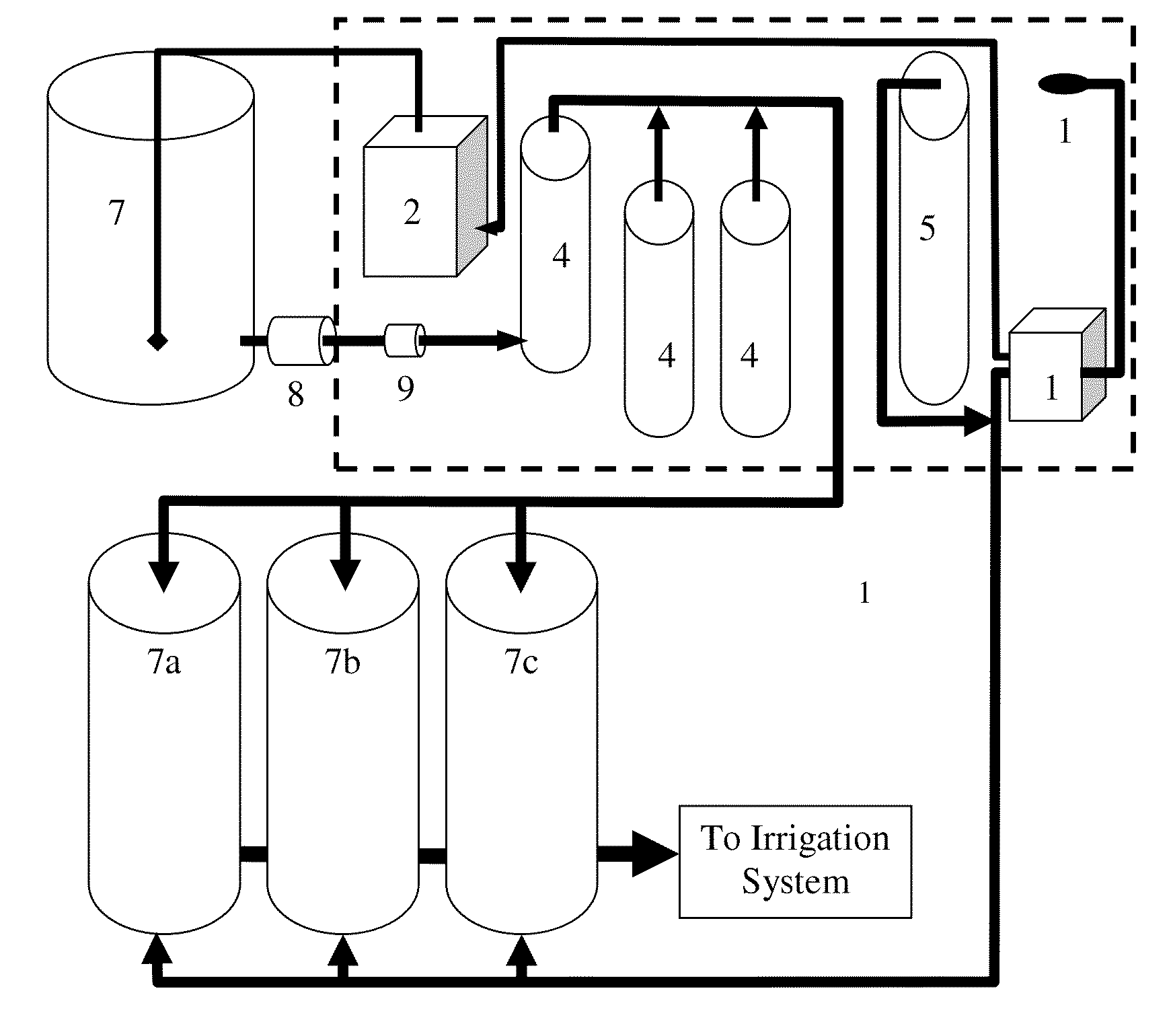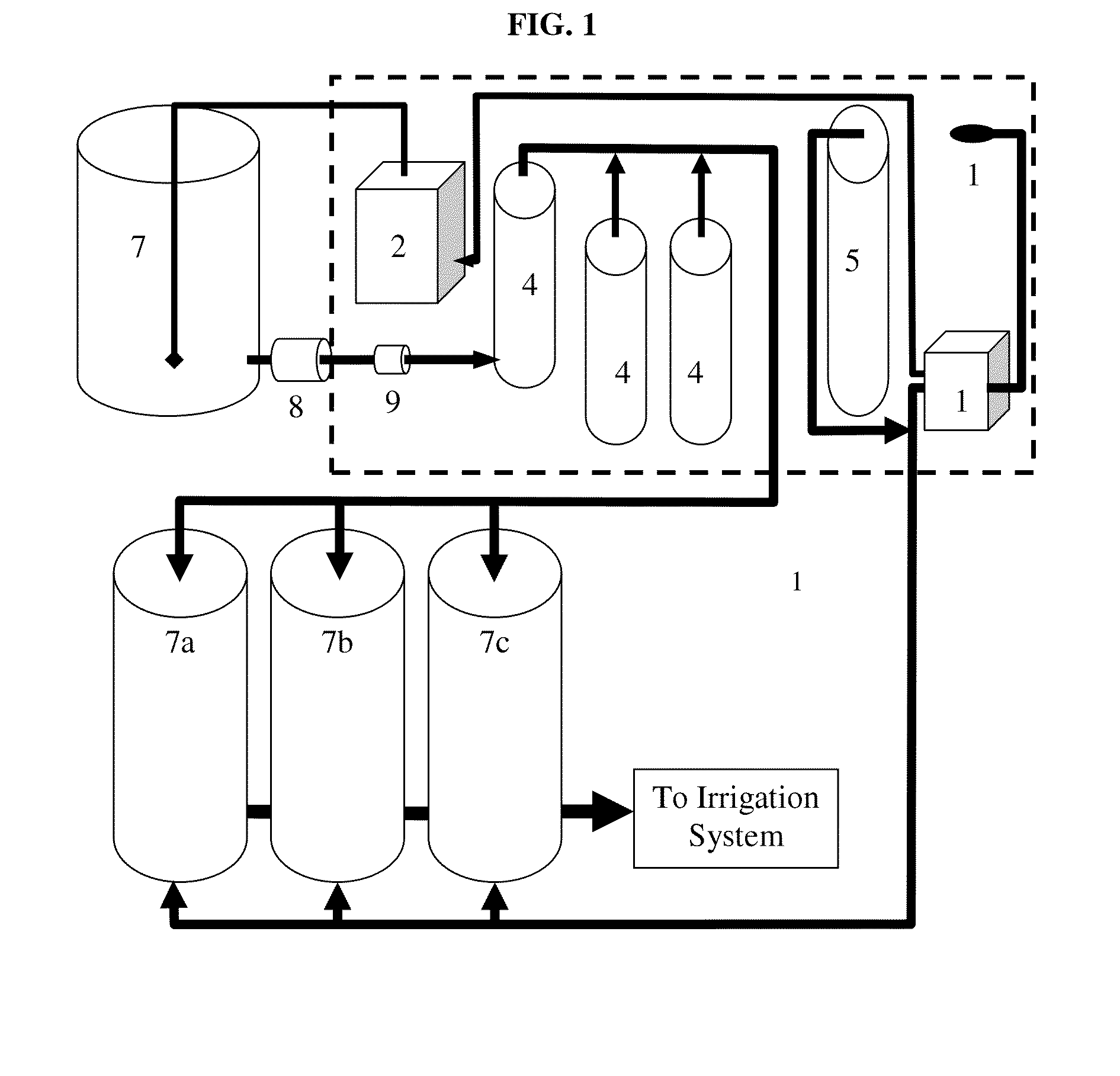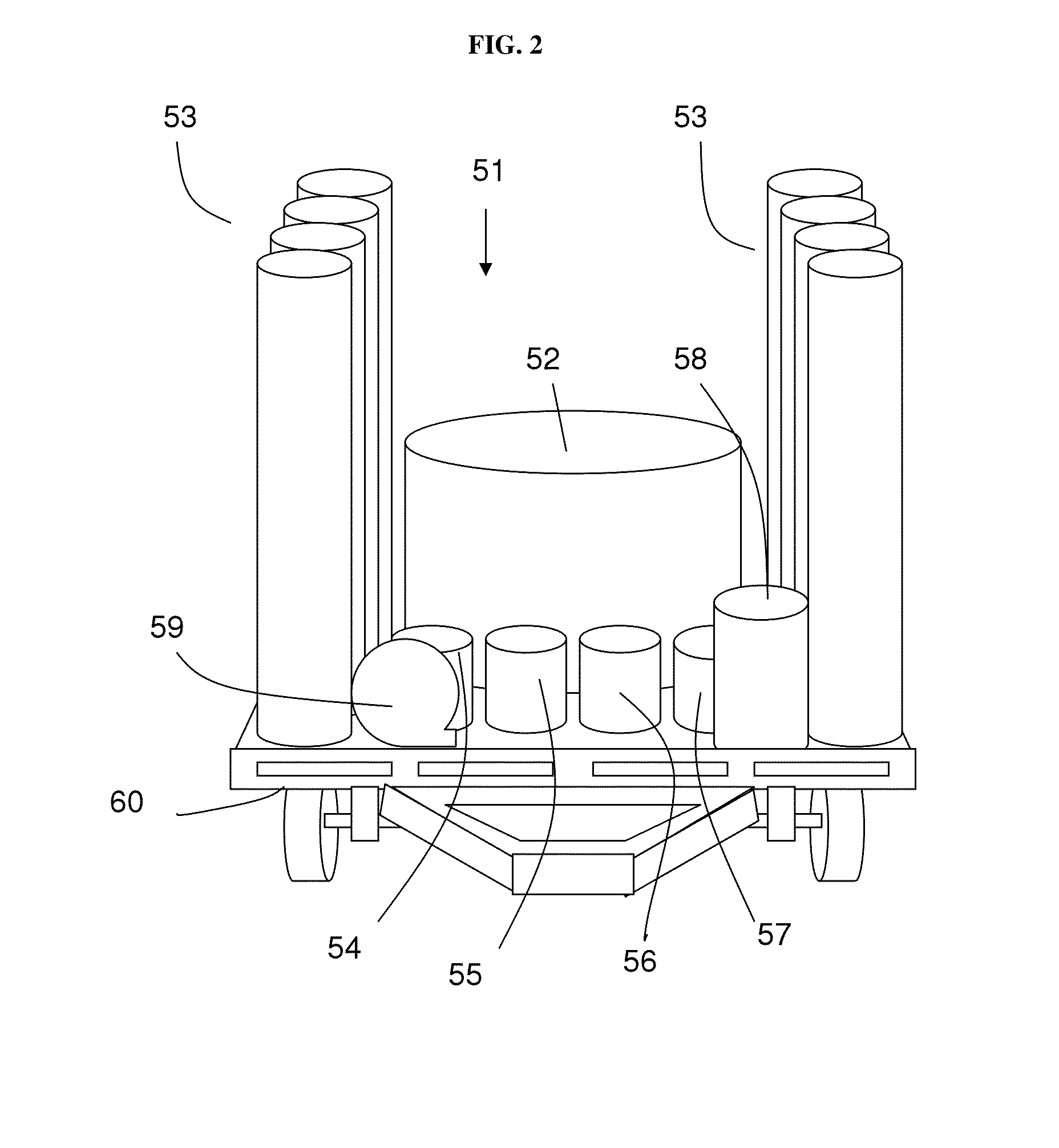Microalgae-based Soil Inoculating System and Methods of Use
a soil inoculation system and microalgae technology, applied in the field of soil inoculation system, can solve the problems of algae presence, high demand for increasingly expensive chemical raw materials, and overall negative impact on the environment, and achieve the effects of enhancing the nutrient content of water used, enhancing crop, seed, grain and/or fruit yield, and enhancing the nutrient content of water
- Summary
- Abstract
- Description
- Claims
- Application Information
AI Technical Summary
Benefits of technology
Problems solved by technology
Method used
Image
Examples
example 1
Evaluation of the System for Melon Growth
[0096]The system of the invention was used to grow the Yosemite variety of cantaloupe melons. About 200 acres were infused with microalgae-containing irrigation water. The crop was watered every five days during afternoons due to high ambient temperatures (120° F.). Microalgae were added to the irrigation water continuously with each watering. Algae from the class Chlorophyceae and cyanobacteria were added to the irrigation water at a combined density of 6 billion cells per minute. The algae were cultured in media shown in the table below.
FW MediaFinal Conc.Stock SolutionsUse Rate(g / L)(g / L)(ml / L)N & P SolutionNaNO30.34434.410KCl0.30330.3NaH2PO40.032.91Missing element solutionsCaCl2-2H2O0.111110MgSO4•7H2O0.24624.6Trace Element SolutionNa2EDTA-0.00454.500012H2OFeCl3•6H2O0.002892.8910MnCl2-4H2O0.000980.9800ZnSO4•7H2O0.0000360.0360CoCl2•6H2O0.0000110.0110Na2MoO4-0.000120.12002H2OCrO30.0000750.0750SeO20.0000050.0050CuSO4•5H2O0.0000120.0120Vitamins...
example 2
Evaluation of the System for Other Crop Growth
Tomatoes
[0100]Tomatoes grown in a hot house in soil infused with microalgae. Their growth was compared to a control crop of tomatoes, which soil was not infused with microalgae. The treated tomatoes exhibited faster growth with larger, juicier, redder produce, lower acid content, improved flavor as compared to untreated control tomatoes. They also exhibited an average of ten days to two weeks earlier maturing rate, a significant resistance to disease (principally the mosaic virus), and increases in yields of 10-23% in certain varieties.
Corn
[0101]Algae biofertilizer, fossilized algae from mines of ancient oceans, was applied to a crop of corn grown on a field. The corn exhibited increased germination rates, increased ear and kernel size, increased protein content, earlier maturation, and increased yields both in silage crops and feed corn as compared to untreated control corn. The microalgae also increased the crop's ability to withstand ...
example 3
Crop Growth Employing Two Different Microalgae
[0104]Prior to planting the seeds of a crop in soil, the soil is irrigated repeatedly with an inoculate containing a first species from the phylum Chlorophycophyta of microalgae until the soil has achieved the desired properties of increased organics with polysaccharides in the soil to increase water retention Seeds are planted in the treated soil and irrigated repeatedly with an inoculate containing a different second species from the phylum Cyanophycophyta of microalgae to infuse the soil with nitrogen sequestered from the atmosphere. until the crop has reached maturity. The crop is then harvested using known methods. At his point a third species also from the phylum Cyanophycophyta is introduced into the irrigation water and delivered to the soil where it produces a biological toxin to kill unwanted pests in the soil. The first species of the phylum Chlorophycophyta of microalgae is used to enhance the fertility and other properties o...
PUM
 Login to View More
Login to View More Abstract
Description
Claims
Application Information
 Login to View More
Login to View More - R&D
- Intellectual Property
- Life Sciences
- Materials
- Tech Scout
- Unparalleled Data Quality
- Higher Quality Content
- 60% Fewer Hallucinations
Browse by: Latest US Patents, China's latest patents, Technical Efficacy Thesaurus, Application Domain, Technology Topic, Popular Technical Reports.
© 2025 PatSnap. All rights reserved.Legal|Privacy policy|Modern Slavery Act Transparency Statement|Sitemap|About US| Contact US: help@patsnap.com



